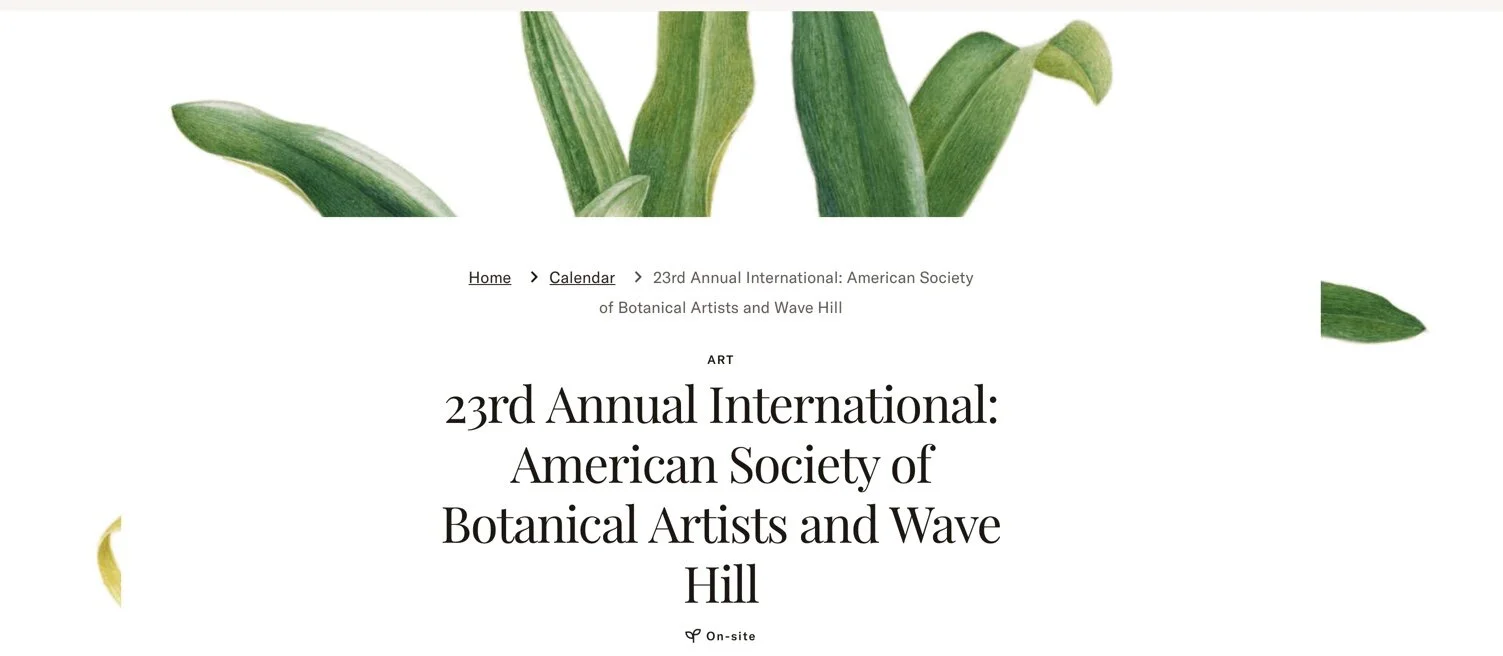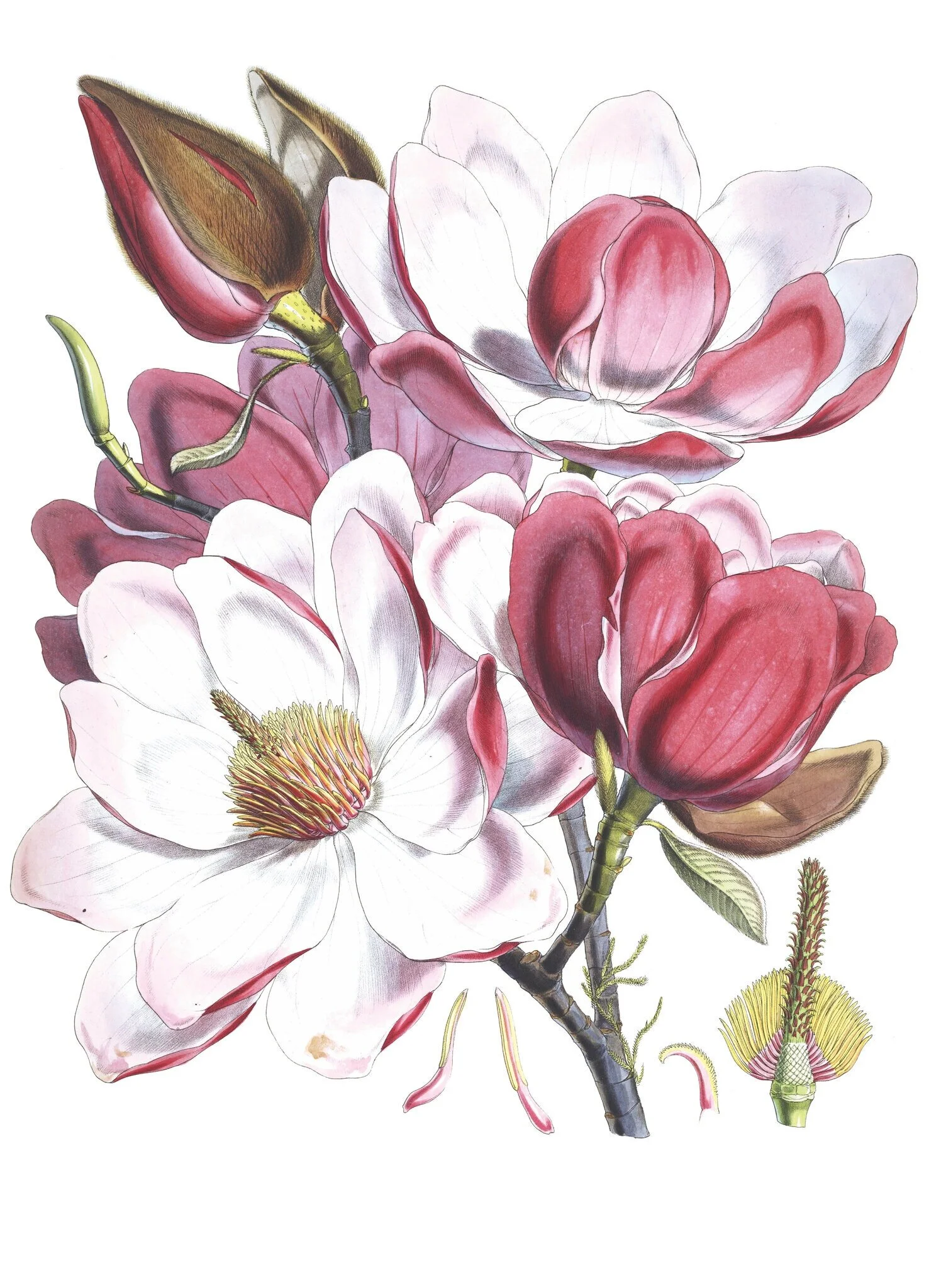A wonderful thing about living in New England is the annual seasonal changes that come almost like clockwork. Spring, summer, and fall bring the natural world to life. Green becomes a dominant landscape color. Garden perennials and native wildflowers begin to grow. Bulbs pop through the soil after a long-needed rest. Trees and woody shrubs blossom. Summer brings blooms of glorious colors from gardens to hills, and valleys, and even the seashore. Then comes fall, with it’s stunning foliage in every shade of red, orange and gold. The days get cooler and shorter until one can’t ignore what’s coming : winter, the season of grays and browns.
INSPIRATION: SPOTLIGHT ON WAVE HILL
Inspiration
By Anne Brownlee-Fisher
Spotlight on: Wave Hill
In 2018 and again in 2020 Wave Hill hosted the 21st and 23rd Annual International respectively, a juried exhibition of American Society of Botanical Artists, hosting works from May thru December 6th, 2020. Described as an 'oasis in the Bronx' by the New York Times, Wave Hill is an unconventional museum comprised of a nature sanctuary, performance venues, along with indoor and outdoor art exhibition areas. According to its website, "Wave Hill is a museum without walls with a living collection of more than 4,000 varieties of trees, shrubs, vines, and herbaceous plants.' Its 28 acre site hosts formal gardens, an 8 acre woodland, greenhouses, a conservatory, and multi-use indoor spaces.
Lauren Meier talks about Frederick Law Olmsted
Yes, You Can Learn to Speak the Language of Plants
Meet NESBA's Board
Welcome to NESBA! We, the Board of Directors, are very happy you have chosen to be part of NESBA and want you to meet us! Our Board consists of members that have been involved in NESBA for a long time and some very recent. We want you to become acquainted with us so you can feel free to contact us with any questions, ideas or comments.
What is Botanical Art?
Imagine being able to paint every part of a living thing with incredible, microscopic detail, with every flick of a brush bringing the vibrancy of a petal to life?
Botanical illustration does just that. It is one of the most specific, and vital artforms that plays a major part in botanical discovery.
Every painting, or plate, that a trained botanical artist creates becomes the visual definition of its subject.
At Kew, this plate becomes cemented in history as part of our 200,000-strong botanical illustrative archive. This is a scientific tradition that dates back centuries.
Botanical Illustration is Becoming Endangered, but the Job is Essential
She doesn’t spend much time with this vista; as the Smithsonian’s botanical illustrator, her gaze is on plants, dried specimens of dead plants, up close, and closer, under a microscope. Sometimes she hydrates stems and flower parts, coaxing zombie life into them. She can become so absorbed in the structures that four or five hours will pass without her realizing that the sun has long set behind the Washington Monument.







